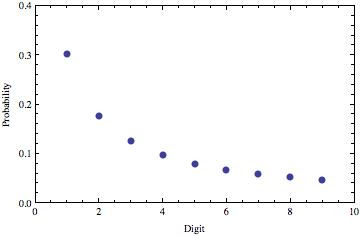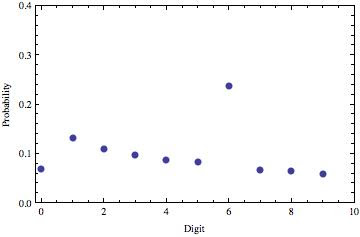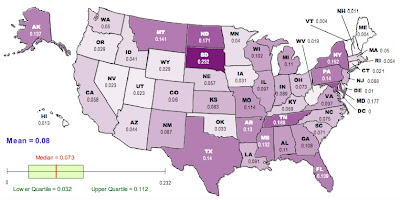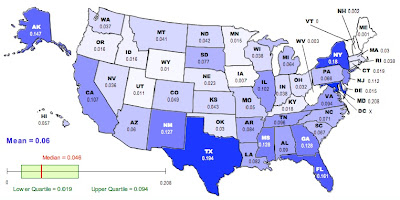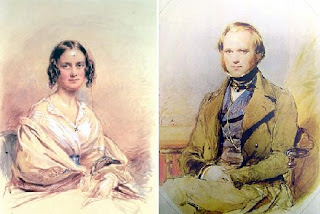So, it’s been a while since the last installment of the Primers on Imprinting feature, but they should be posted with greater regularity in the upcoming weeks. This time we’re going to introduce something that we will see again in future installments: small differences in selection lead to large differences in behavior.
Last time, we introduced the most widely discussed and most successful explanation of the evolutionary origins of genomic imprinting, the “kinship” or “conflict” theory. According to this theory, imprinted gene expression is a consequence of the fact that natural selection acts differently on alleles depending on their parent of origin. There are several ways to think about the origin of this differential selection, but we talked about it in terms of the framework that I find most intuitive: inclusive fitness.
As we also noted last time, even in the cases where the asymmetry in selection on maternally and paternally derived alleles is sufficiently large to drive the evolution of imprinted gene expression, the actual magnitude of this asymmetry is actually incredibly small. Why? Well, even for a allele with large effects on the survival and reproduction of related individuals, the dominant factor in the inclusive fitness of that allele is still going to be the survival and reproduction of the individual organism carrying that allele around.
But, the standard pattern observed with imprinted genes is that the allele-specific expression is all or nothing. For example, an allele might be expressed when it is inherited from a male, but completely silent when inherited from a female. So this small difference in the optimal expression levels of the maternally and paternally derived alleles leads to – in a way – the largest possible difference in the realized expression levels of the two alleles.
I like to think of this in terms of an analogy. Imagine that Pat and Chris share an office, and that they have a slight disagreement over the temperature they want the office at. Say Pat wants the office to be at 71 degrees (Fahrenheit), while Chris wants it to be 70. Each of them has control over a small space heater, and this is the only mechanism that they have for manipulating the temperature. [1]
What’s going to happen? Let’s say the temperature is 70 degrees. Pat will turn up his/her space heater until the temperature reaches 71. In response, Chris will turn his/her space heater down until the temperature comes down to 70. They will go back and forth like this until, eventually, Chris’s space heater is completely turned off. Pat will then turn his/her space heater up to get the room to 71. Then we’re done. Chris is unhappy about the temperature of the room, but no longer has any ability to make it any cooler.
Two things about this outcome. First, a small disagreement over the ideal temperature has led to a large divergence in the strategies: Chris’s space heater is all the way off, while Pat’s is on and doing all the work. Notice that the outcome would be exactly the same, in principle, if Chris’s ideal temperature were 70.9 degrees, or even 70.999 degrees. [2]
Second, Pat wins. This is a consequence of the fact that we are talking about space heaters, and that Pat prefers the higher temperature. If, instead of space heaters, Pat and Chris each had control of an air conditioner, Chris would be the winner. At equilibrium, Pat’s air conditioner would be all the way off, and the room would be at 70 degrees.
This is also the way it works with alleles at an imprinted locus. Let’s consider the case of a gene where increased expression results in increased prenatal growth. The inclusive fitness argument says that the optimal amount of this growth factor is higher for an allele when it is paternally inherited than when it is maternally inherited. Say this patrilineal optimum is 105 units, while the maternal optimum is 95 units.
If the gene is not imprinted we might expect it to produce about 100 units, with each allele producing 50. However, once the evolutionary dynamics of imprinting take over, the pattern of expression will evolve to one where alleles are transcriptionally silent when maternally inherited, but where a paternally expressed allele is making 105 units.
For a growth-suppressing gene, where increased expression actually reduces prenatal growth, we expect the opposite pattern, where alleles are silenced when paternally inherited, but are expressed when maternally inherited. This set of predictions – that imprinted growth enhancers will be paternally expressed, and imprinted growth suppressors will be maternally expressed – matches the empirically observed pattern by and large, although there are a few counterexamples that are not fully understood at the moment.
This pattern of allele silencing has been dubbed the “loudest voice prevails” principle. The phenotype evolves to the optimum of the allele favoring higher expression. Now, you can argue that this is the sort of thing that does not really need its own name. Fair enough. It’s really just saying that the evolutionarily stable state of the system is an edge solution. But, “loudest voice prevails” is sort of catchy, and has the advantage of reminding us which allele is expressed at equilibrium.
The Haig 1996 citation is the paper that introduces the phrase. The other three citations are papers published around the same time that use different mathematical frameworks to address the evolution of gene expression at an imprinted locus. Generically speaking, the answer is the one described here, although the Spencer, Feldman, and Clark paper identifies certain regimes in parameter space where apparently different results can be obtained. In a future post, we will delve into the differences in the assumptions and conclusions of different modeling frameworks as they have been applied to imprinting.
Now, what if you consider more than one imprinted gene? What if Pat and Chris each have a space heater and an air conditioner? We’ll talk about that next time.
Haig, D. (1996). Placental hormones, genomic imprinting, and maternal-fetal communication Journal of Evolutionary Biology, 9 (3), 357-380 DOI: 10.1046/j.1420-9101.1996.9030357.x
Mochizuki A, Takeda Y, & Iwasa Y (1996). The evolution of genomic imprinting. Genetics, 144 (3), 1283-95 PMID: 8913768
Haig, D. (1997). Parental antagonism, relatedness asymmetries, and genomic imprinting Proceedings of the Royal Society B: Biological Sciences, 264 (1388), 1657-1662 DOI: 10.1098/rspb.1997.0230
Spencer HG, Feldman MW, & Clark AG (1998). Genetic conflicts, multiple paternity and the evolution of genomic imprinting. Genetics, 148 (2), 893-904 PMID: 9504935
–––––––––––––––––––––––––––––––––––––––
[1] Of course, in the real-life situation, we might assume that Pat and Chris would discuss the situation and come to some sort of agreement. This is a key difference between people interacting in strategic situations and genes evolving under natural selection. Alleles at a locus are like people sharing an office, where both of them are incredibly passive aggressive. If it helps, imagine that Pat and Chris won’t talk to each other.
[2] In practice, of course, there is going to be some minimum level of disagreement required in order to trigger this passive-aggressive escalation. In this analogy, the minimum level will be set by a combination of things such as the sensitivity of Pat and Chris to small changes in temperature, the precision with which the space heaters control the temperature of the room, and the extent to which they care about each other’s comfort. Similar reasoning holds in the case of genes, and we will address this in a future installment of the series, where we ask why there are any genes that are not imprinted.
